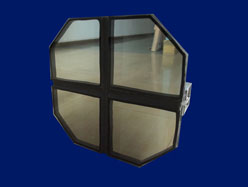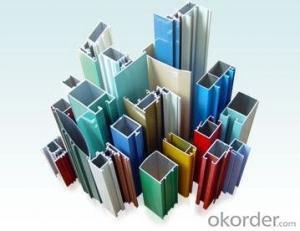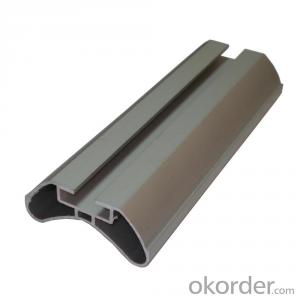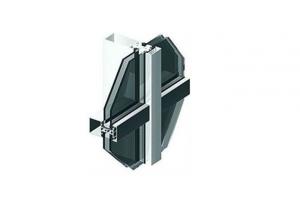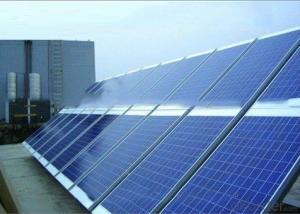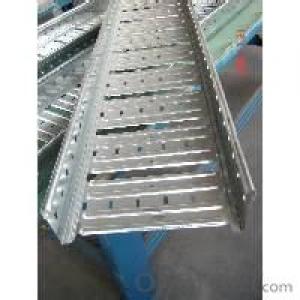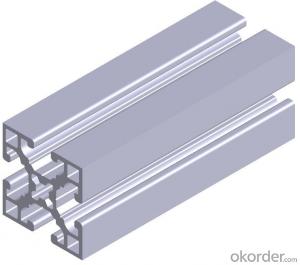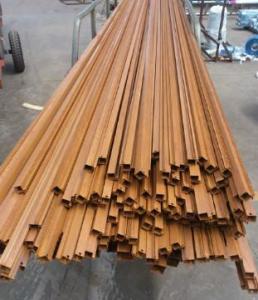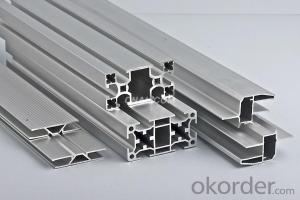Aluminum T Slot Profiles Curtain Wall
- Loading Port:
- China Main Port
- Payment Terms:
- TT OR LC
- Min Order Qty:
- -
- Supply Capability:
- -
OKorder Service Pledge
OKorder Financial Service
You Might Also Like
Industrial aluminium profile
1)Material : 6063 6061 6060 and different aluminium alloy
2)Status:T4 T5 T6 or other special status
3)Surface treatment: mill finish, anodized sliver ,anodized bronze, anodized champagne, anodized black pearl, various power coating color, electrostatic sliver, electrostatic champagne, electrostatic golden, electrostatic titanium , machine polish sliver, machine polish bronze, wooden grain color, and Fluorocarbon spraying.
4)Annual capacity : 120000TON
5)Quality : China Nation Standard GB/T 5237 2008 (advanced class)
6)Use: can be widely using aluminium window, door, curtain wall, hand railing , normal aluminium profile, decorative and industrial aluminium profile
7)Advantage: Famous Brand reasonable&market price, soonest delivery and good after sale- service
8)Type of package:protection foam+heat contracted plastic film. / wooden packing / Metal pallet or depand on clientspecial requirement.
9)Payment term:T/T:30% of total value as deposite should paid by T/T within 3 days when confirmation ,and the remaining sum should be paid by T/T before delivery.L/C: 100% at sight
10)Delivery Day: 15-30days
11)Honor : CHINA FAMOUS TRADEMARK, CHINA TOP BRAND, ISO9001-2000, CHINA SQUARE&ROUND COMMITTEE DNV
- Q: Are aluminum profiles suitable for roofing systems that need to withstand strong wind loads?
- <p>Yes, aluminum profiles can be used for roofing systems that require high levels of wind load resistance. Aluminum is a lightweight yet strong material with excellent resistance to corrosion and weathering. It can be engineered into profiles that provide the necessary structural integrity to withstand high wind loads. The flexibility of aluminum allows for the creation of various shapes and designs that can be tailored to meet specific wind resistance requirements. Additionally, aluminum's durability and low maintenance make it a popular choice for roofing systems in areas prone to high winds.</p>
- Q: Can aluminum profiles be used in signage or display applications?
- Yes, aluminum profiles can be used in signage or display applications. Aluminum profiles are versatile and lightweight, making them ideal for creating durable and visually appealing signs and displays. They can be easily cut, shaped, and joined together to create custom frames, panels, and structures for various signage and display purposes. Aluminum profiles also offer excellent corrosion resistance, ensuring that the signs or displays remain intact and attractive even in outdoor or high-moisture environments. Additionally, aluminum profiles can be powder coated or anodized to provide a wide range of color options, allowing for branding or customization. Overall, aluminum profiles offer a reliable and cost-effective solution for signage or display applications, providing both functionality and aesthetics.
- Q: What are the standard dimensions and sizes of aluminum profiles?
- The standard dimensions and sizes of aluminum profiles can vary depending on the specific application and industry. However, common sizes for aluminum profiles range from small profiles with dimensions around 10mm x 10mm to larger profiles with dimensions around 100mm x 100mm. Additionally, the length of aluminum profiles can vary but is often available in standard lengths of 2 meters, 3 meters, or 6 meters. It is important to consult the manufacturer or supplier for the specific dimensions and sizes required for a particular project.
- Q: What are the different types of surface protection for aluminum profiles?
- There are several types of surface protection for aluminum profiles, including anodizing, powder coating, painting, and laminating. Anodizing involves creating a durable oxide layer on the surface of the aluminum, providing corrosion and wear resistance. Powder coating involves applying a dry powder to the surface and then curing it with heat, creating a tough and decorative finish. Painting involves applying liquid paint to the surface, providing both protection and aesthetic appeal. Laminating involves applying a layer of protective film or sheet to the surface, offering scratch resistance and added durability.
- Q: This question asks for a comparison of aluminum profiles with other materials regarding their weight and strength characteristics.
- <p>Aluminum profiles are known for their high strength-to-weight ratio, making them lighter than many other materials while maintaining significant strength. Compared to steel, aluminum is approximately one-third the weight but offers comparable strength, especially in alloy forms. When compared to plastics, aluminum profiles have greater rigidity and durability. They also resist corrosion and are more heat resistant than many plastics. However, aluminum profiles are generally more expensive than plastics and some steels. In summary, aluminum profiles offer a balance of low weight and high strength, making them suitable for applications where weight savings and structural integrity are crucial.</p>
- Q: How do I install aluminum profiles?
- Follow these steps to install aluminum profiles: 1. Begin by selecting the desired location for the aluminum profile installation and ensure the surface is clean and debris-free. 2. Precisely and smoothly cut the aluminum profile to the required length using a saw or miter saw. 3. Create pilot holes at regular intervals along the marked installation area using a drill. These holes will serve as anchor points for the screws or bolts that will secure the aluminum profile. 4. Align the pilot holes on the aluminum profile with the corresponding holes on the surface. Insert screws or bolts through the holes and tighten them using a screwdriver or socket wrench. 5. If you are installing multiple aluminum profiles, repeat the process for each section, ensuring they are aligned and securely fastened. 6. Once all profiles are installed, inspect for any gaps or unevenness. Adjust and tighten the screws or bolts as necessary to ensure a snug fit. 7. Lastly, clean the installed aluminum profiles using a mild cleaning solution and soft cloth to remove any dirt or residue. Remember to wear appropriate safety gear, such as gloves and safety glasses, when handling tools and materials during the installation process.
- Q: Are aluminum profiles suitable for use in roofing or wall systems?
- <p>Yes, aluminum profiles are commonly used for both roofing and wall systems due to their durability, corrosion resistance, and lightweight properties. They offer a modern aesthetic and can be easily integrated into various architectural designs. Aluminum profiles are also known for their strength and flexibility, allowing for the creation of complex shapes and structures. Additionally, they require minimal maintenance and can withstand harsh weather conditions, making them a popular choice for construction projects.</p>
- Q: Are aluminum profiles suitable for conveyor systems?
- Yes, aluminum profiles are suitable for conveyor systems. Aluminum is a lightweight and durable material that is commonly used in various industries for its numerous advantages. Firstly, aluminum profiles offer excellent strength-to-weight ratio, making them ideal for conveyor systems. They can support heavy loads while still being lightweight, allowing for easy installation and flexibility in design. This characteristic is particularly advantageous in conveyor systems where efficiency and ease of movement are crucial. Secondly, aluminum profiles are corrosion resistant. Unlike other metals, aluminum does not rust, ensuring the longevity and reliability of the conveyor system. This is especially important in industries that deal with moisture or harsh environments. Moreover, aluminum profiles are highly customizable. They can be easily machined and shaped to meet specific requirements and dimensions of the conveyor system. This allows for the creation of unique and efficient designs, ensuring optimal performance and functionality. Additionally, aluminum profiles have excellent thermal conductivity. They quickly dissipate heat, preventing any potential damage or overheating of the conveyor system. This is particularly beneficial in industries that involve high-temperature processes. Furthermore, aluminum profiles are cost-effective. While the initial investment may be slightly higher compared to other materials, the long-term benefits outweigh the costs. Aluminum requires minimal maintenance, reducing downtime and associated expenses. In conclusion, aluminum profiles are indeed suitable for conveyor systems. Their lightweight nature, corrosion resistance, customization options, thermal conductivity, and cost-effectiveness make them an ideal choice for a wide range of conveyor applications.
- Q: What is the relationship between aluminum alloy and aluminum alloy?
- Two, according to the alloy can be divided into 1024 categories: a 2011, 6063, 6061, 6082, 7075 grade aluminum alloy, which is the 6 most common. Grades are different in various metal components ratio is not the same, in addition to the commonly used aluminum doors and windows In addition to such as the 60 series, 70 series, 80 series, 90 series, curtain wall series aluminum profile, aluminum industry has no clear distinction model, most manufacturers are in accordance with the actual drawings processing customer. Three, according to the requirement of surface treatment: 1. anodized aluminum 2. Electrocoat aluminum 3. aluminum powder coating 4. transfer grain aluminum 5. aluminum polishing (divided into mechanical polishing and chemical polishing of two, the chemical polishing of the highest cost, the price is the most expensive)
- Q: Is it possible to incorporate recycled aluminum extrusions into a construction project?
- <p>Yes, you can use recycled aluminum extrusions in your building project. Recycled aluminum is not only environmentally friendly but also offers the same strength and durability as new aluminum. It is commonly used in construction for framing, window and door profiles, and structural components. Ensure that the recycled aluminum meets the required industry standards for your project to guarantee quality and performance.</p>
Send your message to us
Aluminum T Slot Profiles Curtain Wall
- Loading Port:
- China Main Port
- Payment Terms:
- TT OR LC
- Min Order Qty:
- -
- Supply Capability:
- -
OKorder Service Pledge
OKorder Financial Service
Similar products
Hot products
Hot Searches
Related keywords

